 W
WClan Munro is a Highland Scottish clan of Irish origins. Historically the clan was based in Easter Ross in the Scottish Highlands. Traditional origins of the clan give its founder as Donald Munro who came from the north of Ireland and settled in Scotland in the eleventh century, though its true founder may have lived much later. It is also a strong tradition that the Munro chiefs supported Robert the Bruce during the Wars of Scottish Independence. The first proven clan chief on record however is Robert de Munro who died in 1369; his father is mentioned but not named in a number of charters. The clan chiefs originally held land principally at Findon on the Black Isle but exchanged it in 1350 for Estirfowlys. Robert's son Hugh who died in 1425 was the first of the family to be styled "of Foulis", despite which clan genealogies describe him as 9th baron.
 W
WAlexander Monro of Craiglockhart and Cockburn was a Scottish anatomist, physician and medical educator. To distinguish him as the second of three generations of physicians of the same name, he is known as secundus. His students included the naval physician and abolitionist Thomas Trotter. Munro was from the distinguished Monro of Auchenbowie family. His major achievements included, describing the lymphatic system, providing the most detailed elucidation of the musculo-skeletal system to date and introducing clinical medicine into the curriculum. He is known for the Monro–Kellie doctrine on intracranial pressure, a hypothesis developed by Monro and his former pupil George Kellie, who worked as a surgeon in the port of Leith.
 W
WAlexander Monro tertius of Craiglockhart, FRSE FRCPE FSA (Scot) MWS, was a Scottish anatomist and medical educator at the University of Edinburgh Medical School. According to his detractors, Monro was an uninspired anatomist who did not compare with his brilliant father or grandfather as a teacher or scientist. His students included Charles Darwin who asserted that Monro "made his lectures on human anatomy as dull as he was himself."
 W
WAlexander Monro primus was a Scottish surgeon and anatomist. His father, the surgeon John Monro, had been a prime mover in the foundation of the Edinburgh Medical School and had arranged Alexander's education in the hope that his son might become the first Professor of Anatomy in the new university medical school. After medical studies in Edinburgh, London, Paris and Leiden, Alexander Monro returned to Edinburgh, and pursued a career as a surgeon and anatomy teacher. With the support of his father and the patronage of the Edinburgh Lord Provost George Drummond, Alexander Monro was appointed foundation Professor of Anatomy at the University of Edinburgh. His lectures, delivered in English, rather than the conventional Latin, proved popular with students and his qualities as a teacher contributed to the success and reputation of the Edinburgh medical school. He is known as Alexander Monro primus to distinguish him from his son Alexander Monro secundus and his grandson Alexander Monro tertius, who both followed him in the chair of anatomy. These three Monros between them held the Edinburgh University Chair of Anatomy for 126 years.
 W
WAndrew Munro [de Munro, de Munroy], or Aindréas Mac an Rothaich as his Gaelic kindred name, was a Scottish churchman active in the 15th century, undoubtedly given his surname a native of Ross of Clan Munro.
 W
WThe Munros of Auchinbowie are a distinguished branch of the Scottish, highland Clan Munro. From this family three Professors of Anatomy at the University of Edinburgh, Scotland were produced, as well as several other doctors and military officers.
 W
WBalconie Castle lay in the parish of Kiltearn, about 1⁄2 mile east of the village of Evanton in the Highlands of Scotland.
 W
WThe Battle of Bealach nam Broig was a battle fought between Scottish clans from the lands of north-west Ross, against north-eastern clans of Ross who supported the Earl of Ross. The actual date of the battle is debated, it probably occurred in 1452 but the Conflicts of the Clans suggests a date as early as 1299.
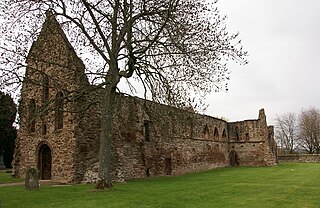 W
WThe dispute over the lands of Beauly Priory took place in about 1577-78 in Beauly, Inverness-shire, Scottish Highlands. It was contested between Colin Cam Mackenzie, 11th of Kintail, chief of Clan Mackenzie and Thomas Fraser of Knockie who was the tutor to the young Simon Fraser, 6th Lord Lovat, chief of the Clan Fraser of Lovat. Fraser was supported by Robert Mor Munro, 15th Baron of Foulis.
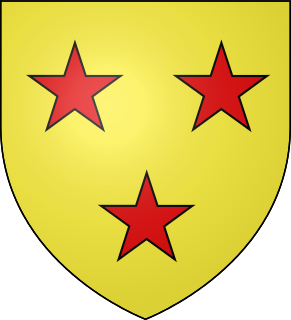 W
WThe Stand-off at Bengrime took place in 1601 and was a stand-off between the armies of John Gordon, 13th Earl of Sutherland and George Sinclair, 5th Earl of Caithness. Bengrime is in the county of Sutherland, Scotland.
 W
WCastle Chanonry of Ross, also known as Seaforth Castle, was located in the town of Fortrose, to the north-east of Inverness, on the peninsula known as the Black Isle, Highland, Scotland. Nothing now remains of the castle. The castle was also known as Canonry or Chanonrie of Ross, the former county.
 W
WCharles John Monro, sometimes also referred to as Charles Munro in accordance with his clan name, is credited with introducing rugby union to New Zealand.
 W
WGeneral Sir Charles Carmichael Monro, 1st Baronet, was a British Army General in the First World War. He held the post of Commander-in-Chief, India in 1916–1920. From 1923 to 1929 he was the Governor of Gibraltar.
 W
WThe chiefs of the Scottish highland Clan Munro, the Munros of Foulis, are according to tradition, descended from a Donald Munro of Foulis who died in 1039. However their descent can only be proved by contemporary evidence back to a Robert de Munro who died in 1369.
 W
WThe Battle of Clachnaharry was a Scottish clan battle that took place in the year 1454. It was fought between the Clan Munro and the Clan Mackintosh on the south bank of the Beauly Firth at Clachnaharry, on the outskirts of Inverness.
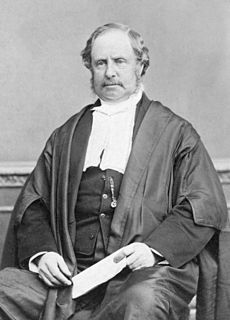 W
WSir David Monro was a New Zealand politician. He served as Speaker of the New Zealand House of Representatives from 1861 to 1870.
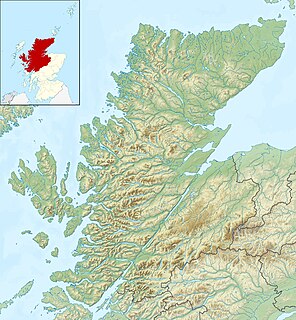 W
WDelny Castle was a castle near the hamlet of Delny, Highland in Scotland.
 W
WDonald Monro was a Scottish clergyman, who wrote an early and historically valuable description of the Hebrides and other Scottish islands and enjoyed the honorific title of "Dean of the Isles".
 W
WThe Battle of Drumchatt was a Scottish clan battle that took place in 1497. The Clan Mackenzie and possibly the Clan Munro defeated the Clan MacDonald of Lochalsh at Drumchatt (Druimchat) or "the Cat's Back", a ridge to the southeast of Strathpeffer.
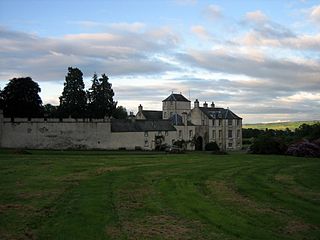 W
WFoulis Castle is situated two miles south-west of Evanton in the parish of Kiltearn, Ross and Cromarty, Scotland. It is a white washed mansion that incorporates an old tower house with gun loops. The castle was held by the Clan Munro from the twelfth century or earlier and they had a stronghold there.
 W
WThe Monro of Fyrish family were a Scottish family and branch of the ancient highland Clan Munro. The family produced a notable dynasty of doctors to London in the 18th and 19th century where they were involved in early work on curing 'insanity'. Four generations occupied successively the position of (Principal) Physician of the notorious Bethlem Hospital (Bedlam). They were also leading members of a variety of important medical associations. Other members were painters, priests and philanthropists of note and one was an important early patron to J. M. W. Turner.
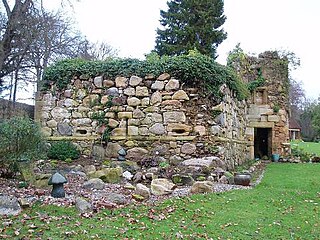 W
WSir George Munro, 1st of Newmore (1602–1693) was a 17th-century Scottish soldier and member of parliament from the Clan Munro, Ross-shire, Scotland. He was seated at Newmore Castle. Between 1629 and 1634 Munro held command in the Swedish army during the Thirty Years' War, and from 1642 in the Scottish Covenanter army during the Irish Confederate Wars before changing his allegiance to the Royalist cause of Charles I in 1648 during the Scottish Civil War and Irish Confederate Wars.
 W
WGeneral Sir Hector Munro, 8th laird of Novar KB was a British soldier who became the ninth Commander-in-Chief of India (1764–1765).
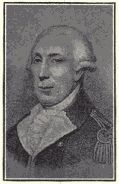 W
WJohn Munro, was generally referred to as 'Captain The Hon. John Munro of Fowlis' to distinguish him from others with the same name and rank. He was a Highland soldier who after the Seven Years' War received extensive land grants at Albany, New York, becoming a prominent Tory and merchant associated with Simon McTavish and the fur trade. Having gained a reputation for no-nonsense, he was made a magistrate and given further land at Vermont to bring Ethan Allen and the Green Mountain Boys to order. Ever the ardent Loyalist, Munro fought for the British during the American Revolutionary War which led to the loss of his land following the American victory. He re-settled in Upper Canada, where he became a Judge and was appointed to the first Legislative Council of Upper Canada.
 W
WGeneral John Munro of the H.E.I.C.S was a Scottish soldier and administrator who served as Resident and Diwan of the States of Travancore and Cochin between 1810 and 1819.
 W
WLemlair House is a mansion house in the parish of Kiltearn, Ross-shire, in the Highland council area of the Scottish Highlands.
 W
WLoch Slin Castle is a ruined castle near Fearn, Highland, Scotland. From the 15th to 17th centuries it was the seat of the Vass family. The castle stood close to Loch Eye on the boundary of the parishes of Tain and Tarbat, but takes its name from an earlier name of the nearby loch.
 W
WMilntown Castle was an early 16th-century castle which was situated near Milton, in Easter Ross, in the Scottish Highlands.
 W
WNewmore Castle is situated just north of the town of Alness in Ross and Cromarty, Highland, Scotland.
 W
WNovar House is an 18th-century building, located 0.7 miles north of the village of Evanton in Ross, Scotland. It is built on the site of an earlier castle.
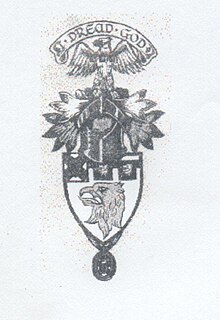 W
WThe Munros of Obsdale were a Scottish family and a cadet branch of the Clan Munro, a Highland Scottish clan. Their base was at Obsdale House, situated just north of the town of Alness in the Scottish Highlands. Some of the members of the Munro of Obsdale family were amongst the most distinguished Scottish military officers of the 17th century.
 W
WGuillermo Ross was a Scottish army officer belonging to the Clan Ross and Munro by maternal line. He had a great military and political activity in the Río de la Plata, occupying the positions of sergeant major and governor of Buenos Aires.
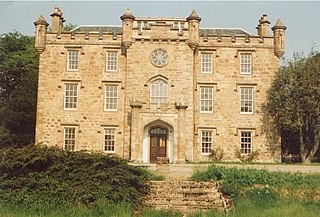 W
WTeaninich Castle is situated north of the village of Evanton and just south of the town of Alness in Ross and Cromarty, Scotland.
 W
WMajor-General Sir Thomas Munro KCB was a Scottish soldier and colonial administrator. He served as an East India Company Army officer and statesman, in addition to also being the governor of Madras Presidency.
 W
WColonel William Munroe was a soldier in the American Revolutionary War. He was the orderly sergeant of the Lexington militia at the Battle of Lexington and Concord and as a lieutenant at the Battle of Saratoga. He was also a militia colonel and a prominent man politically in the town of Lexington.